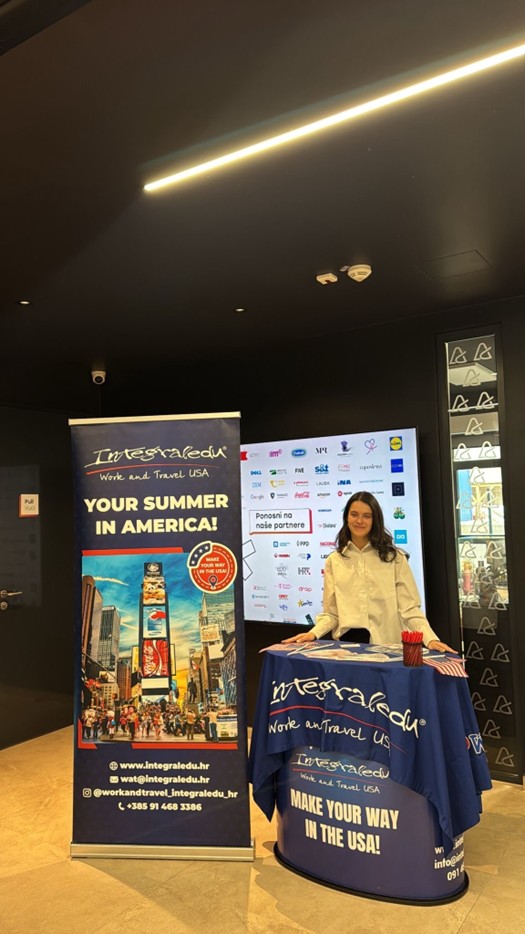On 19 November 2025, a workshop was held at Algebra Bernays University for students considering taking part in the Work & Travel USA programme. Through the presentation, students were introduced to how the programme works, its main advantages, and everything required to successfully complete the application process, as well as topics such as:
-
what the programme offers and who is eligible to apply
• what the application process looks like and the necessary documentation
• an overview of the most common seasonal jobs and how to find an employer
• the procedure for obtaining the J-1 visa and preparing for the embassy interview
• practical tips for living, working, and getting around in the United States
The US State Department has created the Work and Travel USA programme for students from all over the world – a cultural and educational exchange programme that allows students to live, work, and travel across the United States for four months during their summer holidays. Thanks to this programme, as well as other cultural exchange programmes (Exchange Visitor Programmes, EVP), more than 300,000 young people from around the world visit the USA each year.
The Work and Travel USA programme consists of two components – a cultural one and an educational one. The cultural aspect enables young people to familiarise themselves with American culture, lifestyle, and its citizens. In addition, participants have the opportunity to meet students from other parts of the world. The programme is also considered educational because it offers young people the chance to further improve their English.
Why do so many young people choose to take part in the programme?
Work and Travel USA is the easiest and most straightforward way to visit the United States. On the basis of the J-1 visa, which grants students the right to visit and stay in the USA, students have access to the programme’s work period, during which they are legally employed by an American employer, as well as a period designated for travelling and exploring America (the grace period).
Participants showed great interest in the programme, and the atmosphere was highly interactive.



